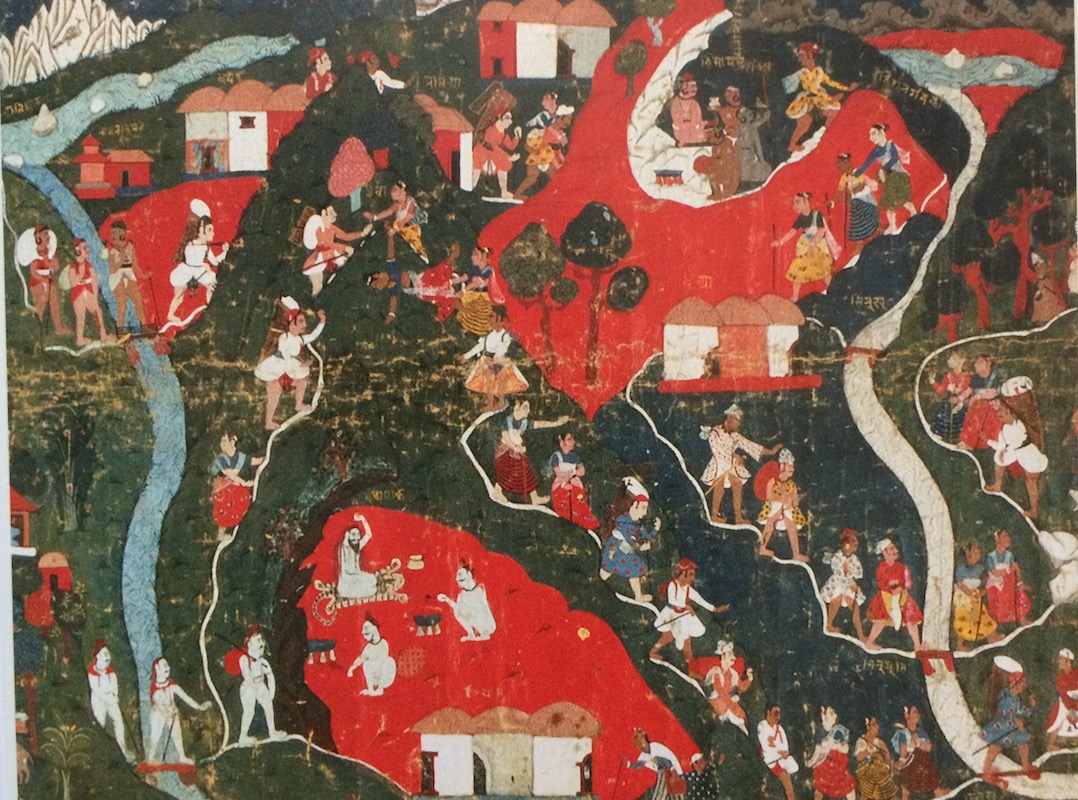
07 Jul The Sacred Places of the Earth Vase Pilgrimage
 Based on the understanding of inseparable wisdom and compassion, pilgrimage is mapped through one’s altruistic intentions. A pilgrimage place can be created anywhere, a stupa or shrine can be erected in any location that is remembered as the axis mundi, the ever-present center that is the nature of one’s own mind recognizing itself. This can be anyplace one sets aside and creates as a nexus of wisdom and compassion. It is important to recognize that this can be done in the center of a place that has suffered desecration and trauma, and that even in the midst of such suffering, the essential purity of reality remains unbroken. The recognition of this is the ability to practice pilgrimage as a way to heal ourselves, our relationships, and our environment.
Based on the understanding of inseparable wisdom and compassion, pilgrimage is mapped through one’s altruistic intentions. A pilgrimage place can be created anywhere, a stupa or shrine can be erected in any location that is remembered as the axis mundi, the ever-present center that is the nature of one’s own mind recognizing itself. This can be anyplace one sets aside and creates as a nexus of wisdom and compassion. It is important to recognize that this can be done in the center of a place that has suffered desecration and trauma, and that even in the midst of such suffering, the essential purity of reality remains unbroken. The recognition of this is the ability to practice pilgrimage as a way to heal ourselves, our relationships, and our environment.
Pilgrimage is the journey out of exile and into the presence of one’s own Buddha Nature. This can happen at any moment, and can be enshrined in any place. Yet, because of the accumulation of intentions, seen and unseen, positive or negative, and because of the way certain locations allow presence to shine forth more clearly, certain places offer more transformational power as pilgrimage destinations.
This understanding guides the process of installing the earth vases, where the group of pilgrims is instructed to intuitively explore an area to find the exact spot for a vase. After a time, everyone gathers again and the most inspired individuals share their discoveries with the group. After all of the locations have been visited, sometimes after several rounds, the location is decided upon and the vase installed. These locations can be magical and hidden, broken and torn, whatever the wisdom of the group encounters and acknowledges as appropriate is honored with the gift of the ritual. Later, following the ceremony, a stupa cairn is built on top of the buried vase and consecrated with prayers and ritual, thereby creating a destination for future pilgrims to find and visit.
Future pilgrims can then perform a fire ritual or some other offering or prayer at these locations, contributing to the original intention and practice. These locations are found, created, and maintained on the basis of intuition and intention, the expression of the open, empty, and compassionate nature of mind, without any goal or expectation beyond the recognition of the sacred that is indestructible and ever-present.
Perhaps this is why Dzongsar Khyentse Rinpoche speaks in the video of Peace Vases as a “useless” way of honoring the earth. In the interest of developing a global ecology, perhaps we have much to learn from this kind of uselessness.
Read More: Stupas and the Vajrayāna


